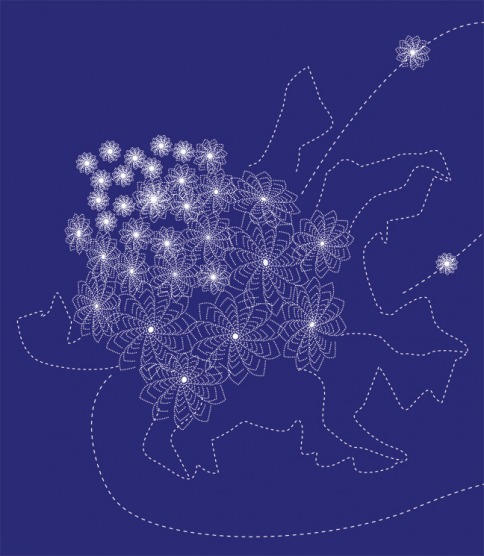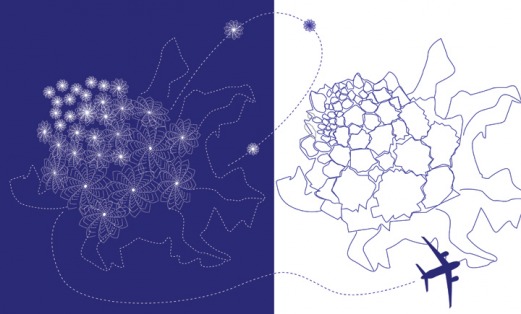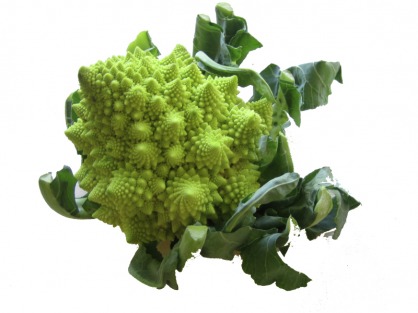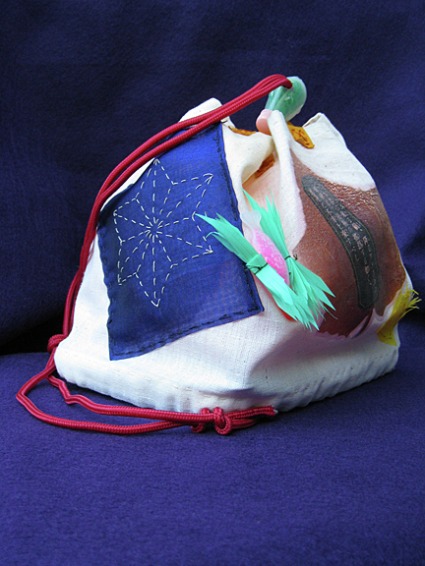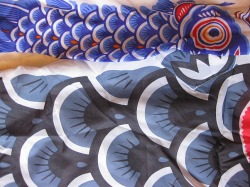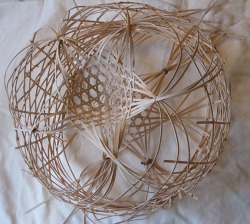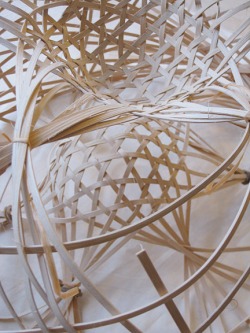Sashiko stitching has fascinated me since I was a child. I saw it on old plantation work clothes hanging in relatives closest, on patched quilts and on purses and on Christmas ornaments. I knew that the origins of this now decorative stitch was in practicality; its function stemmed from the need to repair and reinforce cotton and hemp work clothes.
I suspect that the Japanese agricultural workers in Santa Clara also used sashiko stitching in their work clothes. It will be interesting to research this. A few years back I learned that the current San Jose airport was once a cauliflower field. Japanese Americans were the primary laborers.
In 1940 a bond passed to fund the airport construction. In 1942 Executive Order 9066 let to the removal of Japanese Americans from Santa Clara County. After Internment, many San Jose Japanese Americans returned to Japantown. Today, San Jose's Japantown is the only California Japantown which returned to its exact prewar location.
In this digital sketch above, the bounding line between the blue and while background represents the this time of transition in 1940 and 1942. The circular shapes on the loop tracking back to the cauliflower represents the Japanese returning to San Jose to create a Japantown on its original location. I would like to create a sashiko piece reflecting this history. I took images of young cauliflower as reference for this a few years back and have been stewing on this project. Recreating in sashiko stitching the fractal like patterns of the plant would reflect on culture, the past agricultural economy and the technology industries which replaced it.
I suspect that the Japanese agricultural workers in Santa Clara also used sashiko stitching in their work clothes. It will be interesting to research this. A few years back I learned that the current San Jose airport was once a cauliflower field. Japanese Americans were the primary laborers.
In 1940 a bond passed to fund the airport construction. In 1942 Executive Order 9066 let to the removal of Japanese Americans from Santa Clara County. After Internment, many San Jose Japanese Americans returned to Japantown. Today, San Jose's Japantown is the only California Japantown which returned to its exact prewar location.
In this digital sketch above, the bounding line between the blue and while background represents the this time of transition in 1940 and 1942. The circular shapes on the loop tracking back to the cauliflower represents the Japanese returning to San Jose to create a Japantown on its original location. I would like to create a sashiko piece reflecting this history. I took images of young cauliflower as reference for this a few years back and have been stewing on this project. Recreating in sashiko stitching the fractal like patterns of the plant would reflect on culture, the past agricultural economy and the technology industries which replaced it.
I took a sashiko workshop in the fall on this technique and then taught a workshop at The San Francisco Asian Art Museum (through Serentripity Learning Vacations) incorporating this stitch work. Some images from these initial studies and projects are on on my artist blog.
Several decades ago my grandma gave me a signed copy of Barbara Kawakami's book, Japanese Immigrant Clothing in Hawaii 1885-1941 which documents the work clothes that were improvised from various fabrics and various cultural influences. Some of these garments used sashiko stitching. Mrs. Kawakami's entire Japanese plantation textile collection is now at The Japanese American History Museum in Los Angeles.
Today I found this 2010 exhibit information online on Japanese Sashiko Textiles at The York Art Gallery. Their online gallery of sashiko work clothes is stunning and I will be reading all the accompanying information at the site. I also found this Japanese sashiko artist, Aya Studios on Flickr. She has documented old sashiko stitch work and has lovely creations of her own.
Below is an image of my sample purse for The Asian Art Museum workshop as well as Illustrator sashiko stitching templates. Using transfer paper, the participants traced the designs onto their fabric (Filipino noodle flour bag).
Several decades ago my grandma gave me a signed copy of Barbara Kawakami's book, Japanese Immigrant Clothing in Hawaii 1885-1941 which documents the work clothes that were improvised from various fabrics and various cultural influences. Some of these garments used sashiko stitching. Mrs. Kawakami's entire Japanese plantation textile collection is now at The Japanese American History Museum in Los Angeles.
Today I found this 2010 exhibit information online on Japanese Sashiko Textiles at The York Art Gallery. Their online gallery of sashiko work clothes is stunning and I will be reading all the accompanying information at the site. I also found this Japanese sashiko artist, Aya Studios on Flickr. She has documented old sashiko stitch work and has lovely creations of her own.
Below is an image of my sample purse for The Asian Art Museum workshop as well as Illustrator sashiko stitching templates. Using transfer paper, the participants traced the designs onto their fabric (Filipino noodle flour bag).
